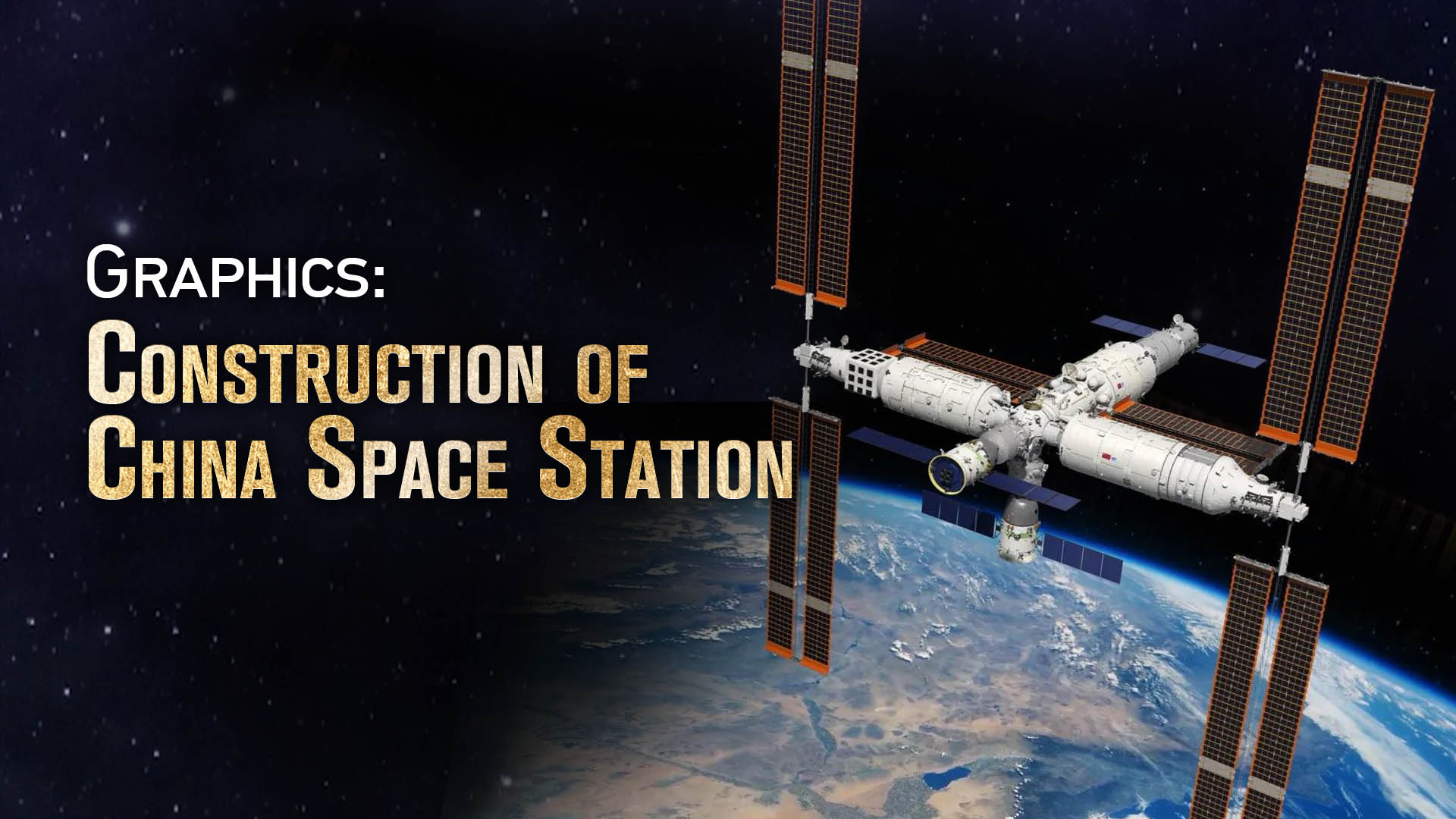
Designed by Yu Peng. /CGTN
Designed by Yu Peng. /CGTN
From 2020 to 2022, China carried out a series of missions, including three major module missions, four cargo spacecraft missions and four manned spacecraft missions, to construct its first space station.
In May 2020, the country's Long March-5B carrier rocket completed its maiden flight, and the rocket then launched the first module of China Space Station (CSS), the Tianhe core module, into space in April 2021.
From a mere dash, the CSS was gradually transformed to an L-shaped structure and then to its current T-shaped structure.

Designed by Yu Peng. /CGTN
Designed by Yu Peng. /CGTN
On November 3, China's space station lab module Mengtian successfully completed in-orbit transposition, marking the formation of a basic T-shaped configuration, representing a key step toward the completion of the CSS.
With the launch of the Shenzhou-15 manned space mission on November 29, a record number of six Chinese astronauts gathered at the CSS on November 30, and finished the first-ever in-orbit crew rotation on December 3.
China's Shenzhou-14 astronauts Chen Dong, Liu Yang and Cai Xuzhe then returned to Earth safely on December 4 after a six-month space mission.
02:07
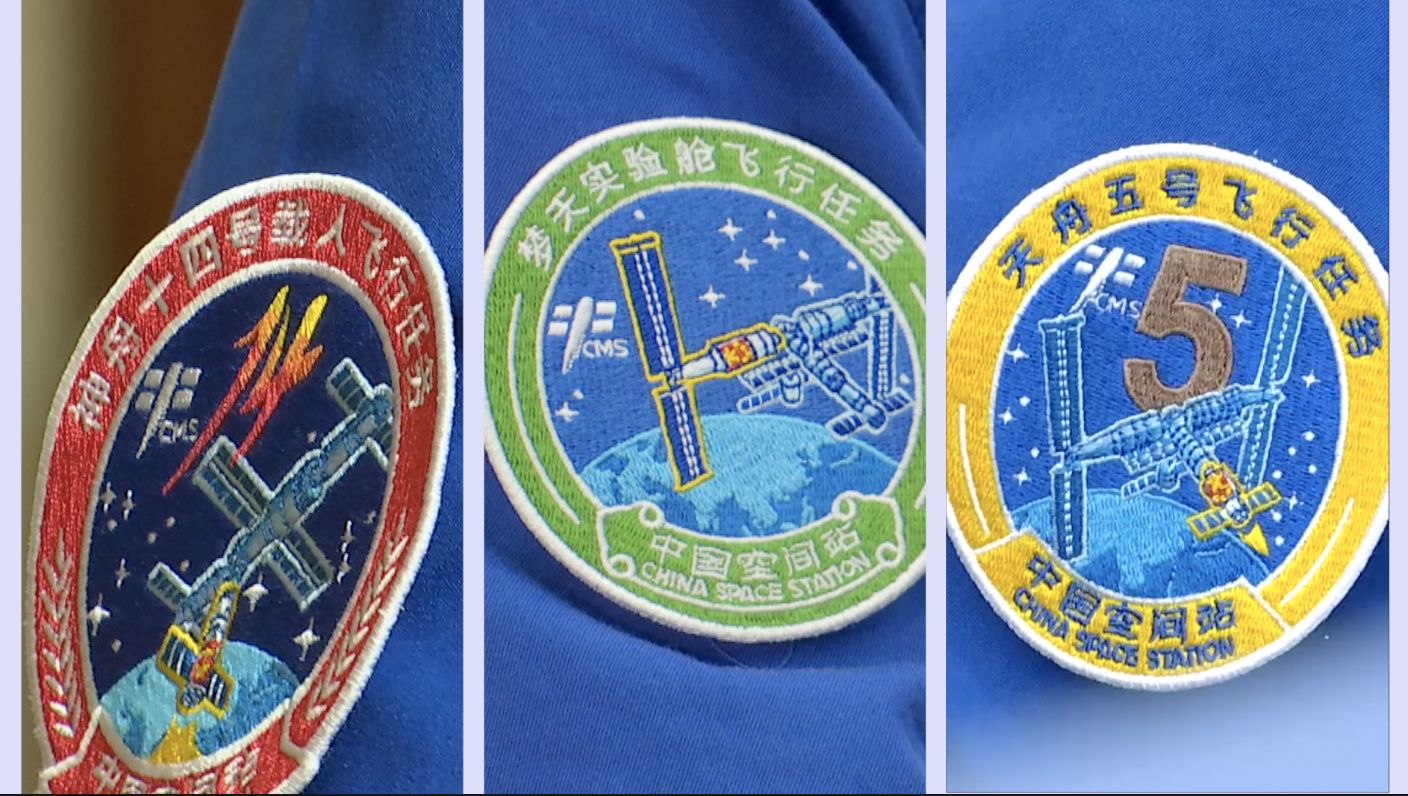
A glimpse of the China Space Station
With the arrival of the Shenzhou-15 spaceship, the CSS has expanded to its largest configuration formed of three modules and three spaceships.
What does the interior of a 110-cubic-meter space station look like?
In the Tianhe core module, there are three horizontal sleeping areas, a range of sport training equipment and more than 120 kinds of food.
A regenerative life support system and a stable internet connection are also installed. One can use a mobile app to control the lighting.
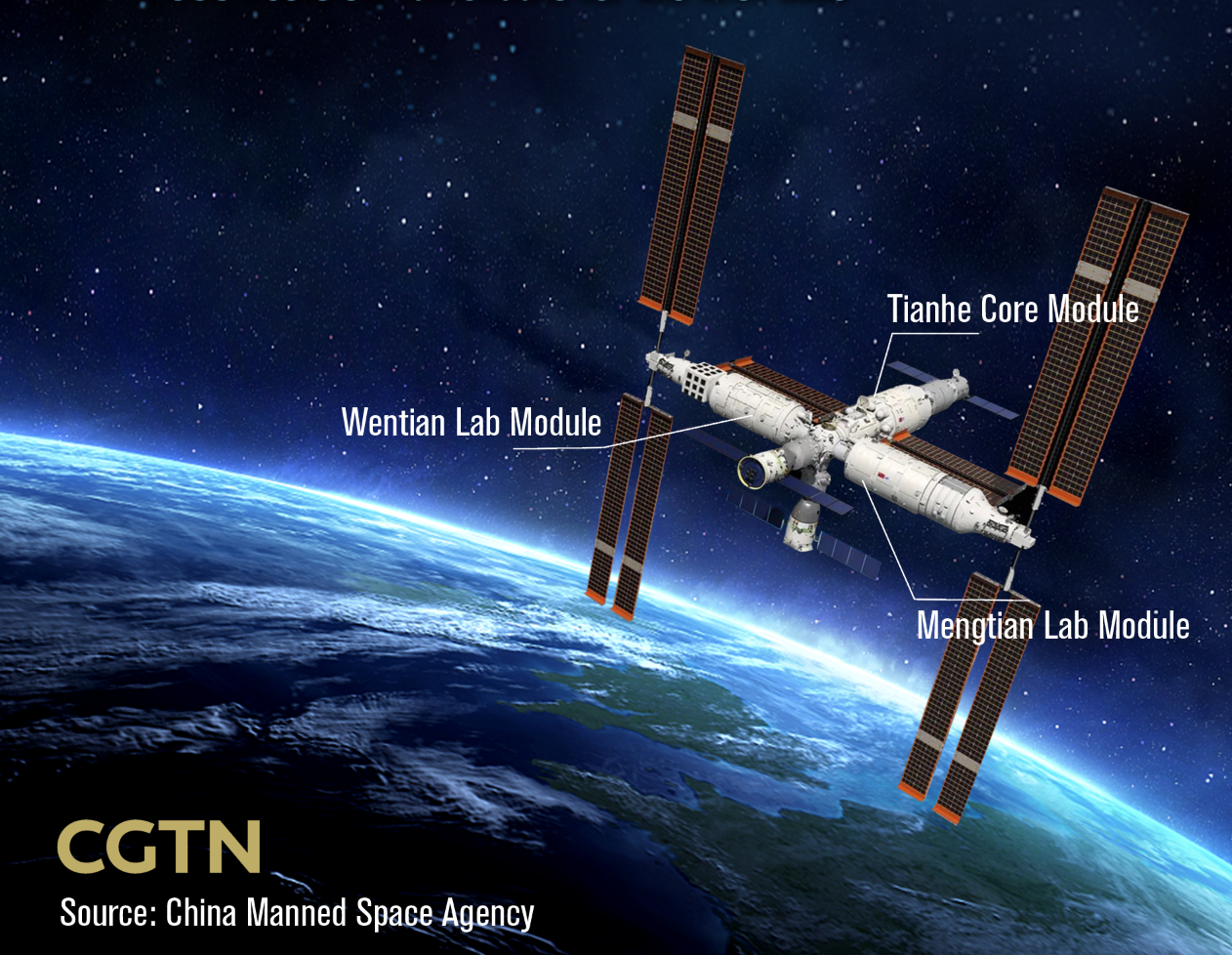
Designed by Yu Peng. /CGTN
Designed by Yu Peng. /CGTN
In the Wentian experimental module, rice and Arabidopsis are growing in their own partitions. In addition to microgravity scientific research, the Mengtian experimental module can release a tiny spacecraft into orbit.
The Chinese space station will be officially completed at the end of 2022. In the future, international astronauts and scientists will also have the opportunity to work and live on the CSS.
07:14
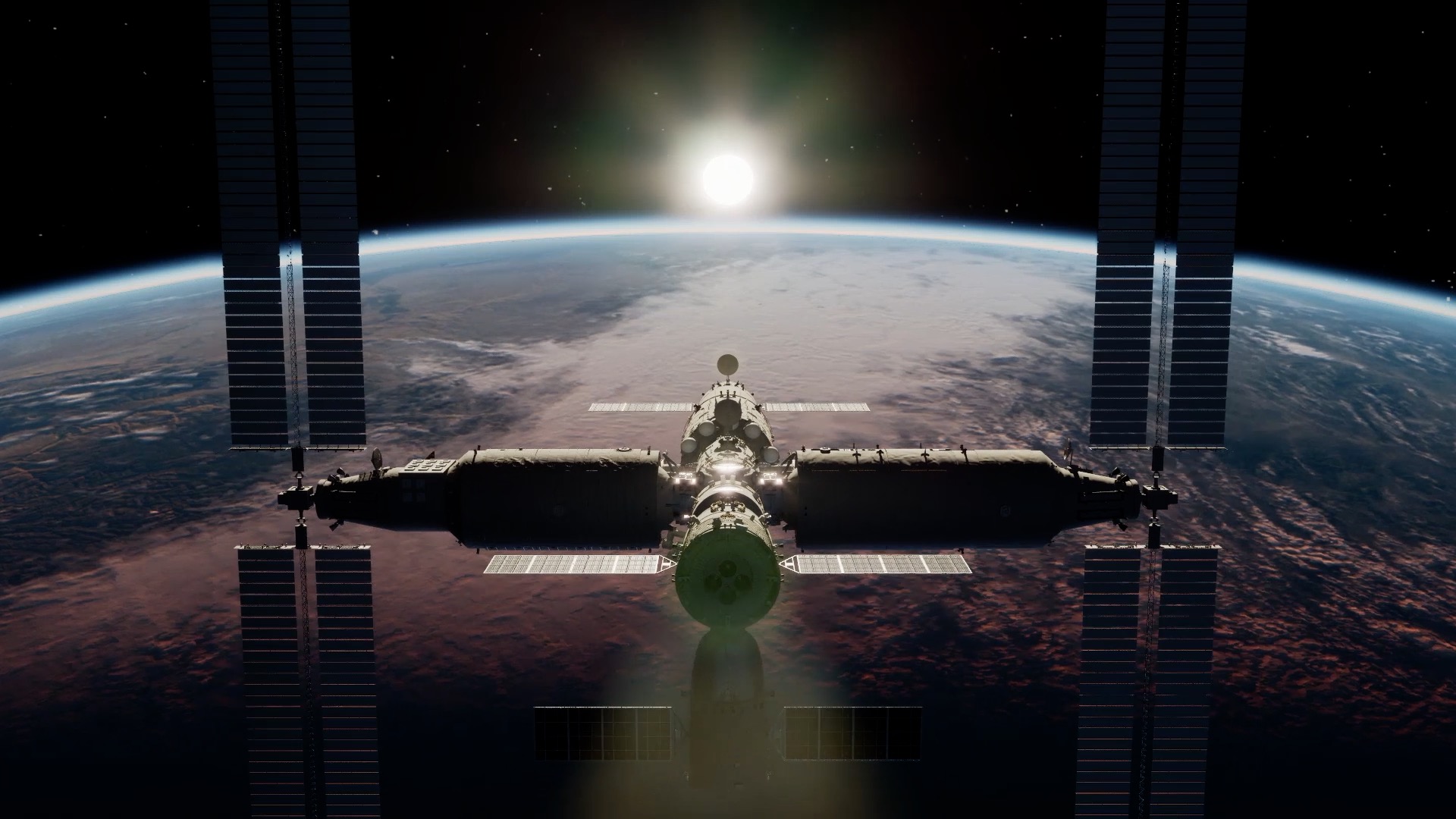
IAE hails CSS construction
Founded in 1951, the International Astronautical Federation (IAF) is the world's leading space advocacy organization, comprising 468 members from 75 countries.
The global community is excited about the future development potential of China's space exploration program, according to the Executive Director of the IAF, who hailed the remarkable achievements China has made in its manned aerospace program over the last two decades, to the expected completion of its own space station by the end of 2022.
IAF chief Dr. Christian Feichtinger told CGTN that the federation hopes for more cooperation in the space sector and for global scientists to carry out more joint experiments on CSS.
"We need to recall the launch of Shenzhou-5 in October 2003, where actually for the first time China launched its first astronaut, Mr. Yang Liwei, to space, which I think the whole world was kind of really excited about. China became the third country to be able to send humans into space after the [former] Soviet Union and the United States," said Feichtinger.
03:22
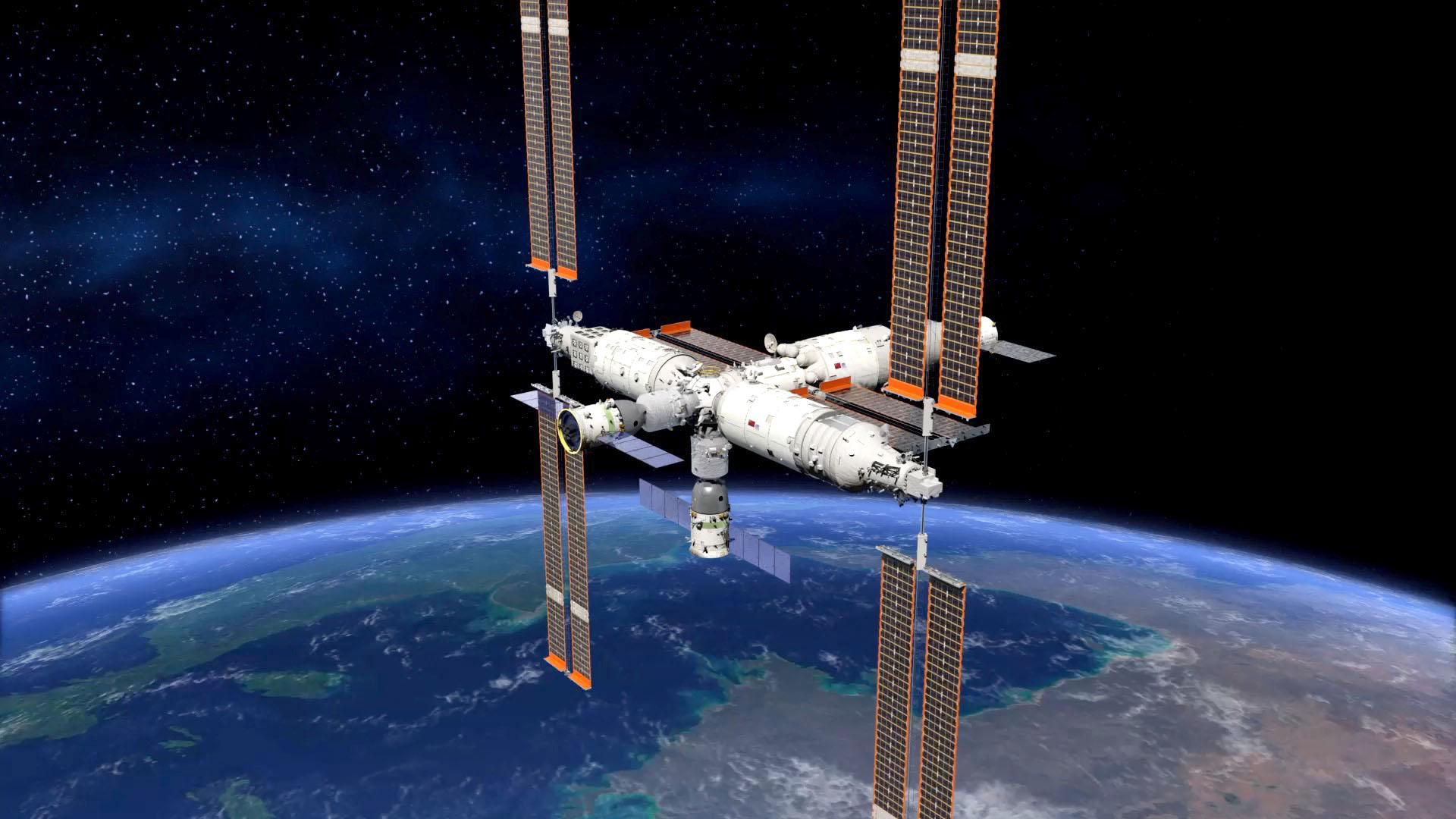
"China is one of the leading countries in low Earth orbit having its own infrastructure, having all the systems in place to support this platform, and now, of course, with Shenzhou-15 bringing the number of astronauts in the space station to six, of course is giving the signal that it's ready, it's kind of built, it's ready to be used, it's ready to do the science on a fully-fledged scale. And I think the world is actually watching."